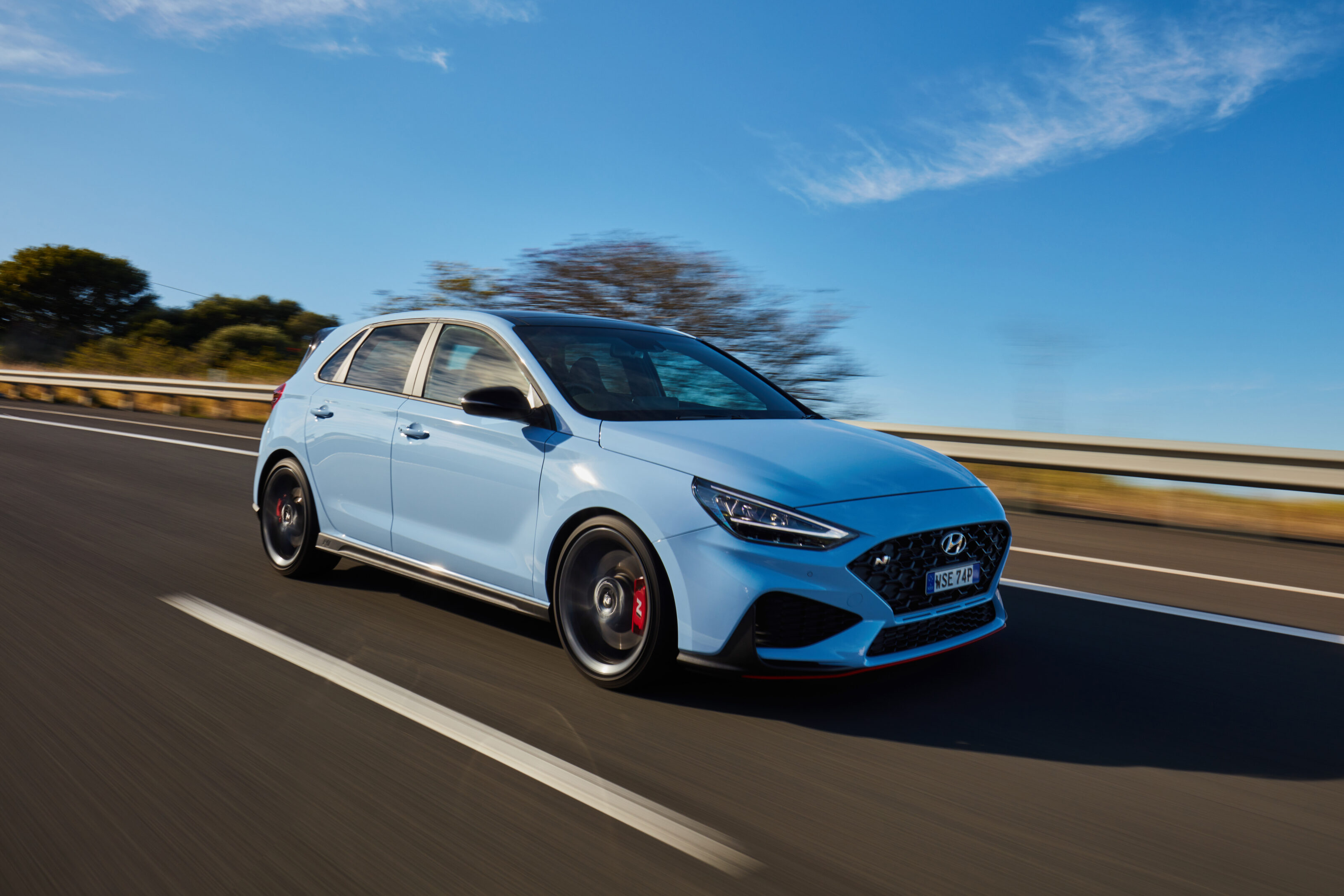Things we like
- Duality of character
- Versatile and effective gearbox
- Hugely capable and hugely fun
Not so much
- Increased entry price
- Interior materials
- Large turning circle
It was three years ago that the then-budding N Division gave us their landmark debut, the Hyundai i30 N.
It blew us away with its incredibly versatile talents, huge fun factor, and the fact that it punched well above its tax bracket. I remember it as one of those special cars that you knew, from the first turn, was bloody good.
Australians gave a warm welcome to South Korea’s breakout star athlete, with over 2700 pre-facelift examples sold locally over the past three years. That makes our fair nation one of N Division’s leading markets, behind Germany and the UK.
But Hyundai knew that N Division’s first-born could do more, for more people, signalling to us years ago that a self-shifting DCT variant was coming.
A couple of delays and three years later and here, finally, sits a 2022 i30 N resplendent with Hyundai’s new eight-speed wet-style dual-clutch transmission.
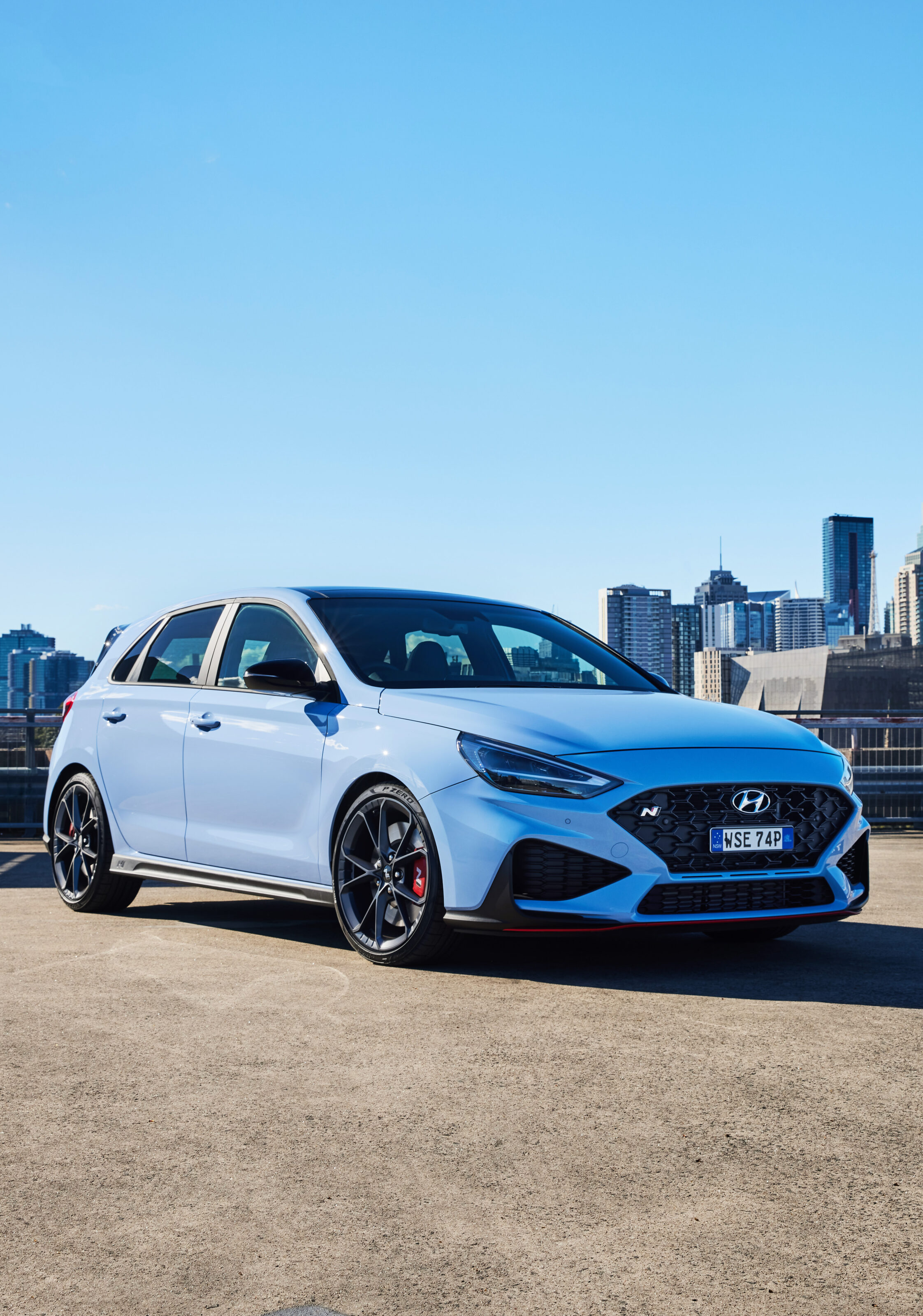
The initial headline sub-$40K pricing now begins at $44,500 (before on-roads) for the standard six-speed i30 N. Add $3000 for a base eight-speed DCT (or a manual in Premium trim), at $47,500.
A Premium Pack pair with sunroofs top the range at $49,000 and $52,000 for the manual and dual-clutch respectively.
That’s not an insignificant increase in coin, but this isn’t an insignificant update either. Far from a fresh face and a new gearbox option, Hyundai’s changelog points to a wholly refined package with meaningful updates outside, inside, and underneath.
From the kerb side test, you’ll notice the wicked new V-shaped LED headlights and taillamps, and the new N-specific cascading grille.
The fresh design is somewhat less wicked, in my eyes, and isn’t as distinctive or proud as the pre-facelift’s softer snout, but you be the judge and let us know.
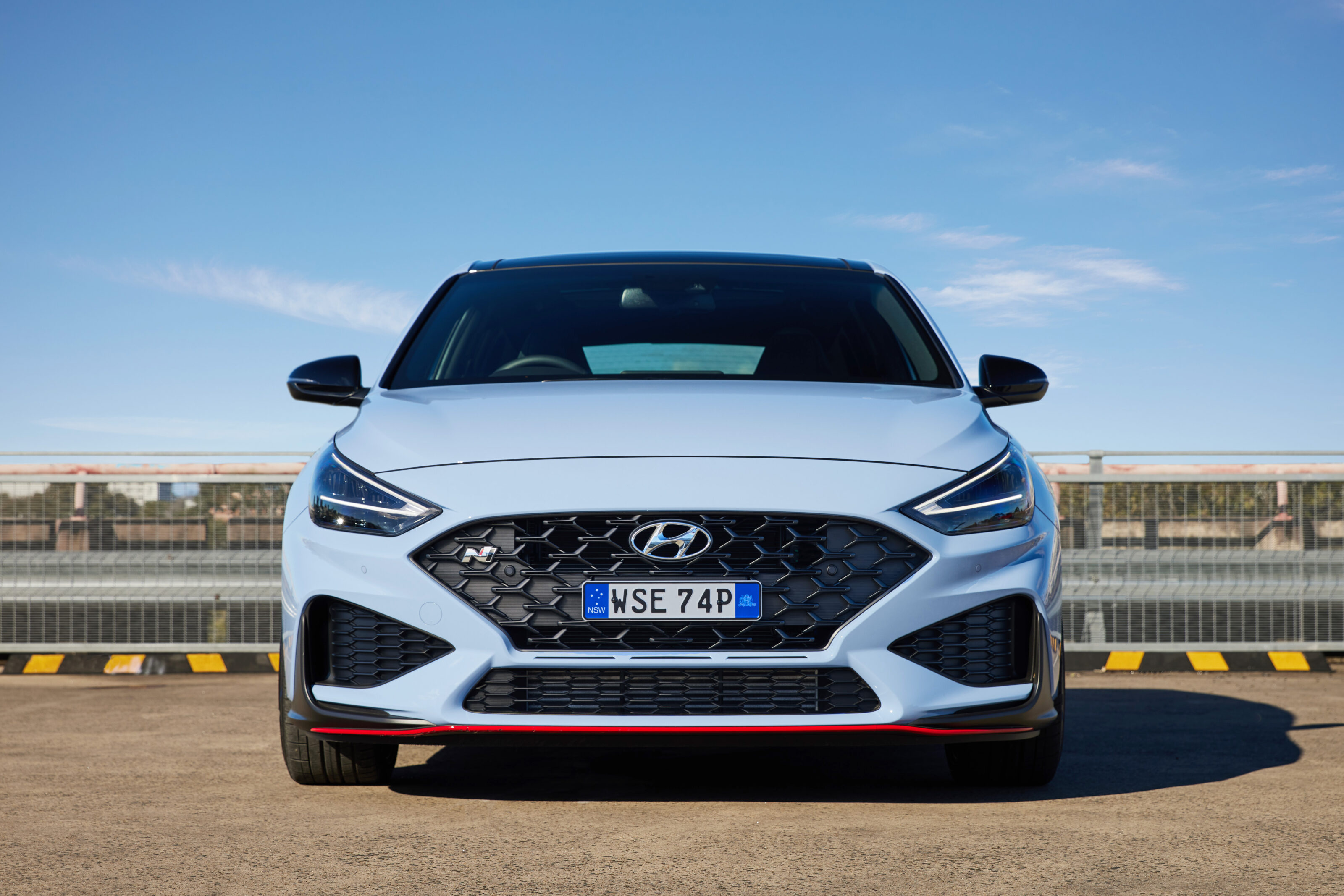
Inside, the standard equipment list looks generous with a new 10.25-inch infotainment screen taking centre stage. Integrated SatNav, DAB+ radio, Apple CarPlay and Android Auto compatibility, dual-zone climate control, wireless phone charger, 4.2-inch central TFT instrument screen, sport bucket seats being the notable appointments.
Hyundai’s SmartSense active safety suite has also expanded within the model, adding Lane Following Assist, Lane Keep Assist, Blind-Spot warning and Rear Cross-traffic alert. The i30 N also benefits from Hyundai’s five-year/unlimited-km warranty.
Our Premium Pack (with sunroof) test car adds beautifully sculpted fixed-headrest bucket recliners with an illuminated ‘N’ logo, Alcantara/leather upholstery, heated front seats and steering wheel, rain sensing wipers and an electro-chromatic rear-view mirror.
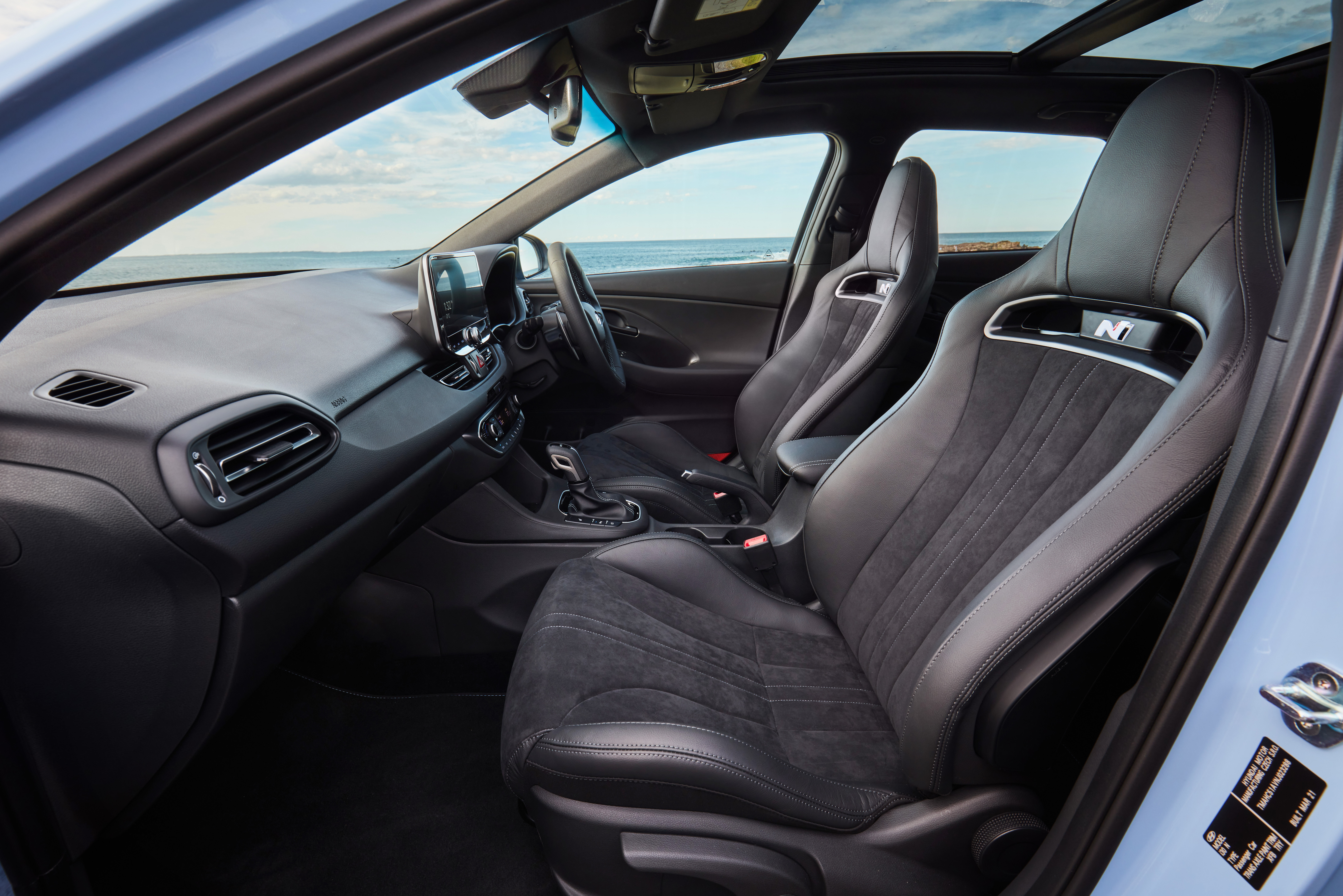
Those Premium bucket seats shave 2.2kgs off compared to the standard-fit items. Other weight-saving measures include the new forged 19-inch wheels.
The lighter rims skim off 14.4kg of unsprung mass (3.6kg per corner) compared to the previous cast alloys, and go some way to negating some of that weight creep brought about by the added kit and new transmission.
Speaking of, the automatic gearbox is a versatile unit that is smooth and robust in its shifts under normal driving circumstances. In fact, when you’re simply noodling around town in Normal mode, it feels as friendly as a base i30.
Here, the throttle calibration is very pedestrian and initial take-up in traffic is smooth, however there’s fairly significant amount of idle creep through the twin-clutch and, in low-speed scenarios, can build to quite a pace if you don’t cover the brakes.
Similarly, in situations like basement parking, frequent changes between drive and reverse can see the car creep to an eye-widening distance before the clutch engages. This isn’t helped by the fact that the i30 N possesses a noticeably large turning circle at 11.6m (a mainstream i30 will do the loop in 10.6m), at times exacerbating the need for hurried three-pointers.
It should be noted that there’s meant to be an aptly named ‘Creep Off’ convenience feature, which sadly couldn’t be located under the expansive N Performance option menu.
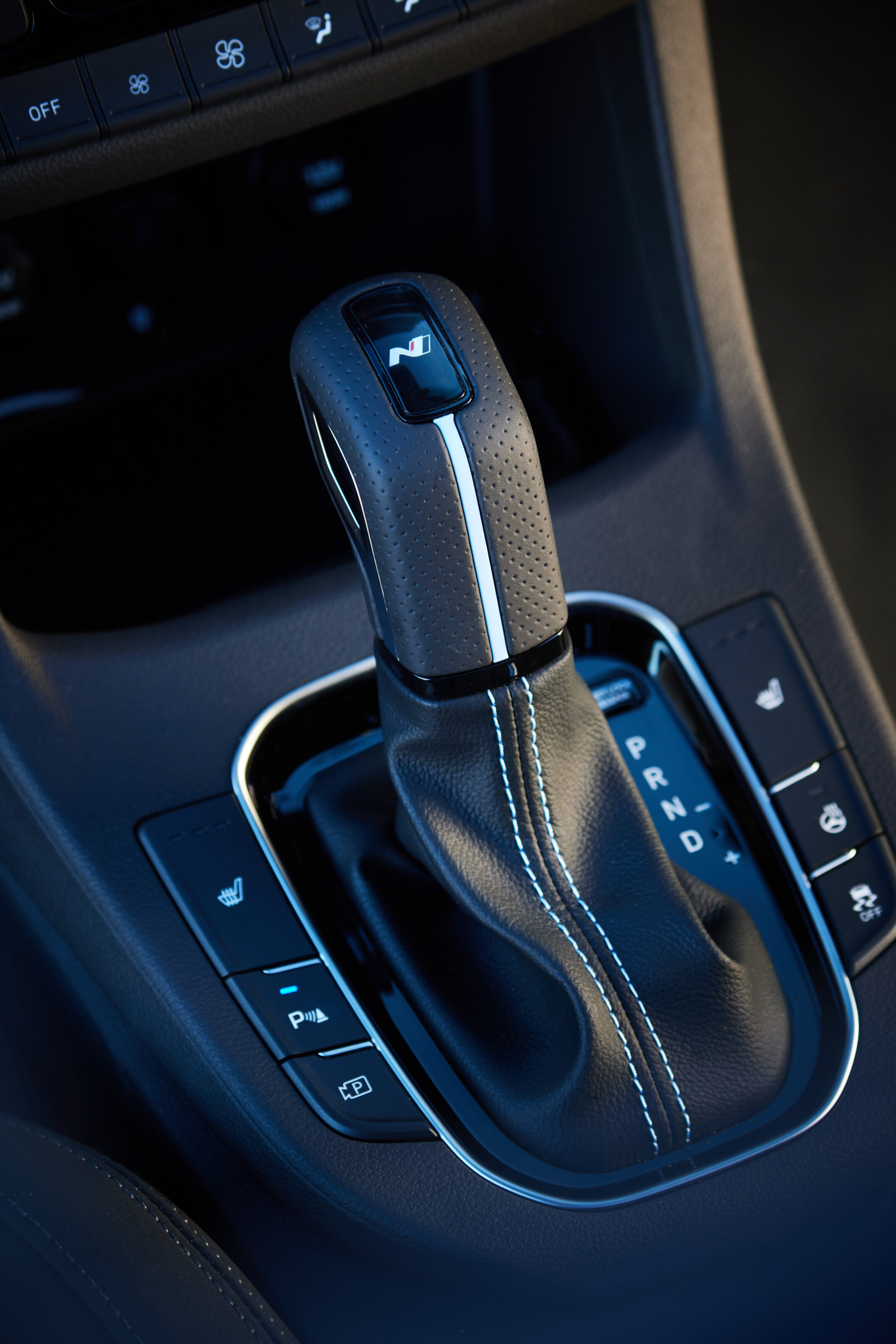
“At speed the twin-clutch is brutally effective, delivering frenetic gear changes through fine metal paddle shifters”
Steering in Normal mode is wonderfully light and, at 2.1 turns lock-to-lock, the rack is quick and effortless to pilot.
Suspension and body control is well-judged and extremely liveable. There’s an undertone of firmness to the locally-tuned adaptive damping in its default mode, although it remains wonderfully compliant and comfy with a wider scope between Sport and Normal modes. It’s a tremendously easy car to drive around town.
But the i30 N DCT’s inner-city mannerisms make up just part of the brief in its quest for new levels of mass appeal. In being more, for more people, has the punchy little blue bolt lost any of that magic we were originally so taken by?
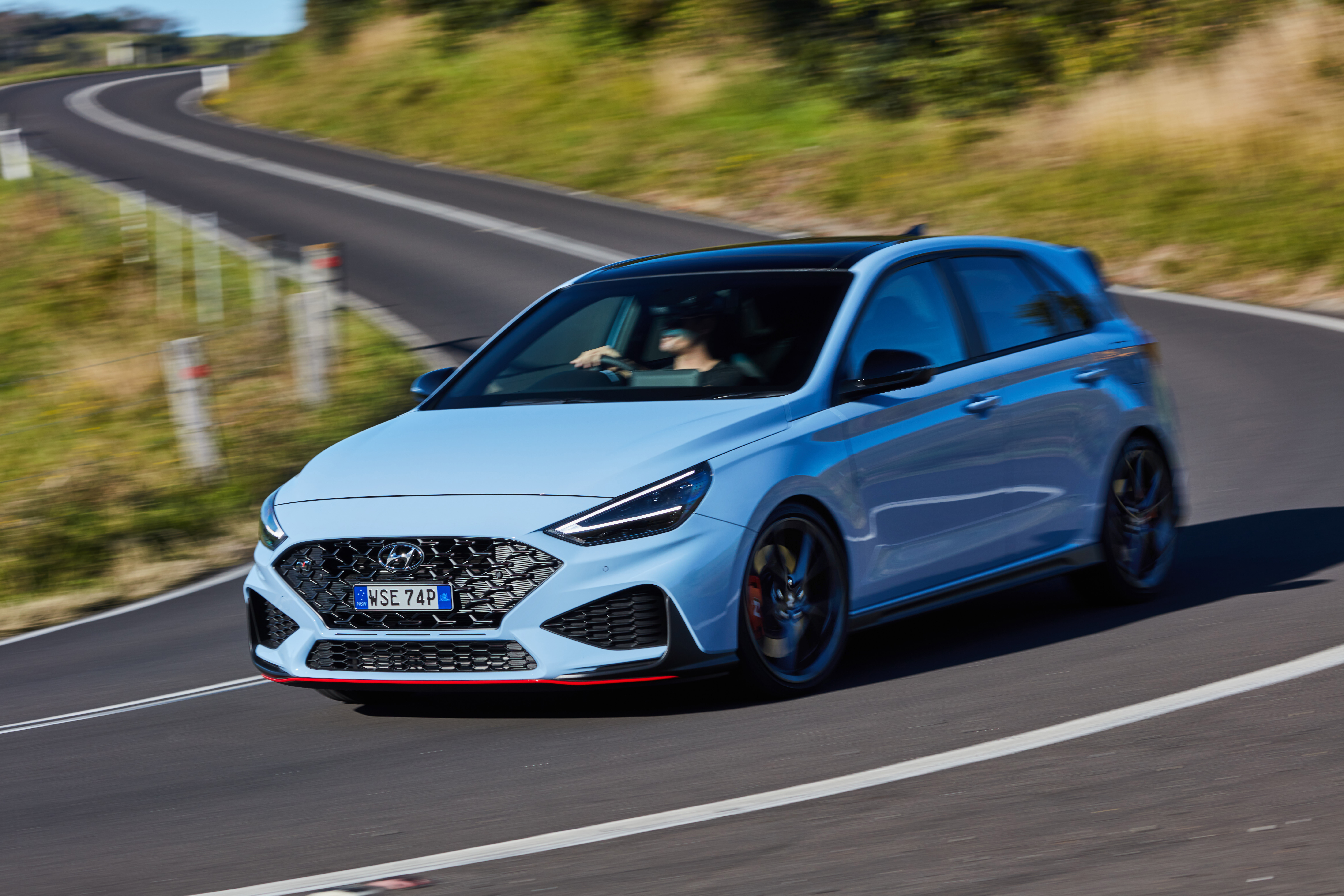
The short answer is no. The new i30 N DCT makes evolutionary strides in its versatility and accessibility, but it’s as poised and fun as ever on a twisting Aussie B-road.
Even in Normal and automatic modes, the i30 N will cover ground quickly and comfortably. Supple body control and precise tactile steering make easy work of dissecting fast flowing roads.
The steering wheel mounted drive mode and N mode buttons make for intuitive and rapid changes in vehicle characteristics whenever the mood should take you.

Sport sharpens up the throttle and weights up the steering into a beautiful sweet spot while avoiding needless heft. The dampers also firm up significantly, communicating fine bumps, contours and changes in road surface, things you were completely unaware of having just run up the same road in Normal mode. The exhaust also drops an octave and there’s an awesome induction noise on the move.
It’s the chequered flag N Mode on the right-side of the steering wheel that acts as the real back-road blast button: loosening ESC into sport, and seemingly kicking the exhaust soundtrack up another notch again.
The i30 N, in its latest guise, survives the need for the dreaded petrol particulate filter, thankfully still signalling downshifts at max attack with a raucous staccato “thratatat” that echoes off rock faces and concrete barriers. It sounds unreal.
At speed the twin-clutch is brutally effective, delivering frenetic gear changes through fine metal paddle shifters, or the tiptronic shifter if you so choose. The gearbox seems happy to cooperate too, and will give you the downshift if it can.
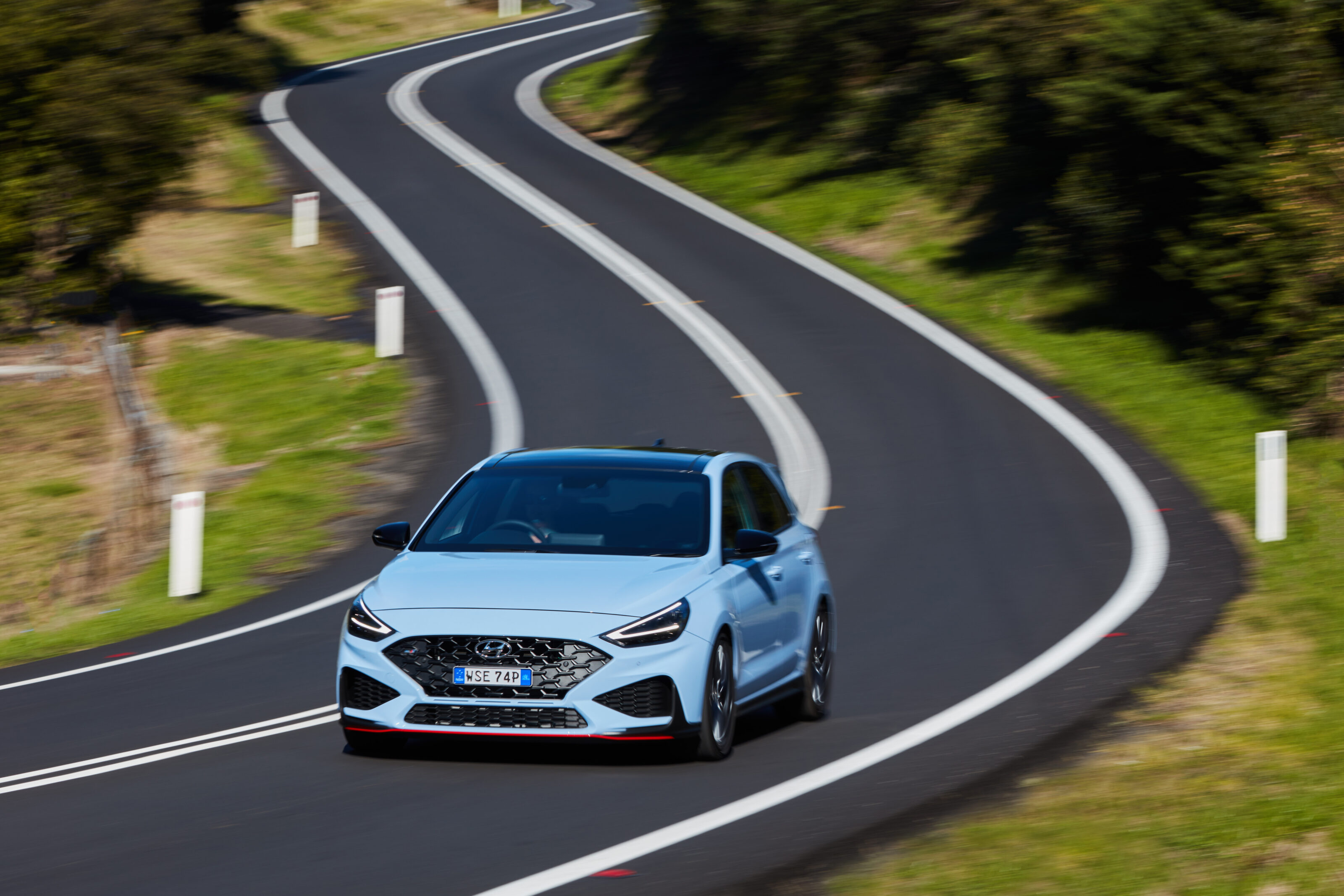
N Division has been busy over the past three years making fine revisions to the suspension, including: new spring rates (increasing 5.7 per cent up front and 4.2 per cent at the rear), revalved dampers, revised rear toe-arms, and redesigned front knuckles and lower control arms yielding an increased 1.7 degrees of negative camber at the front.
Steering remains as brilliantly judged as before. The ceiling for the front-end’s mid-corner grip is very high, and even as you approach the threshold of understeer, the car never ploughs, the square-set Pirelli P Zeros (produced specifically for Hyundai N) instead easing into steady-state understeer as it pulls round the bend. It’s very confidence inspiring and forgiving, with the i30 N being very receptive to mid-corner corrections and inputs.
You can power down very early post-apex and, while there is some kickback through the steering column, the bimodal electronically controlled mechanical differential at the front axle confidently tracks straight and true.
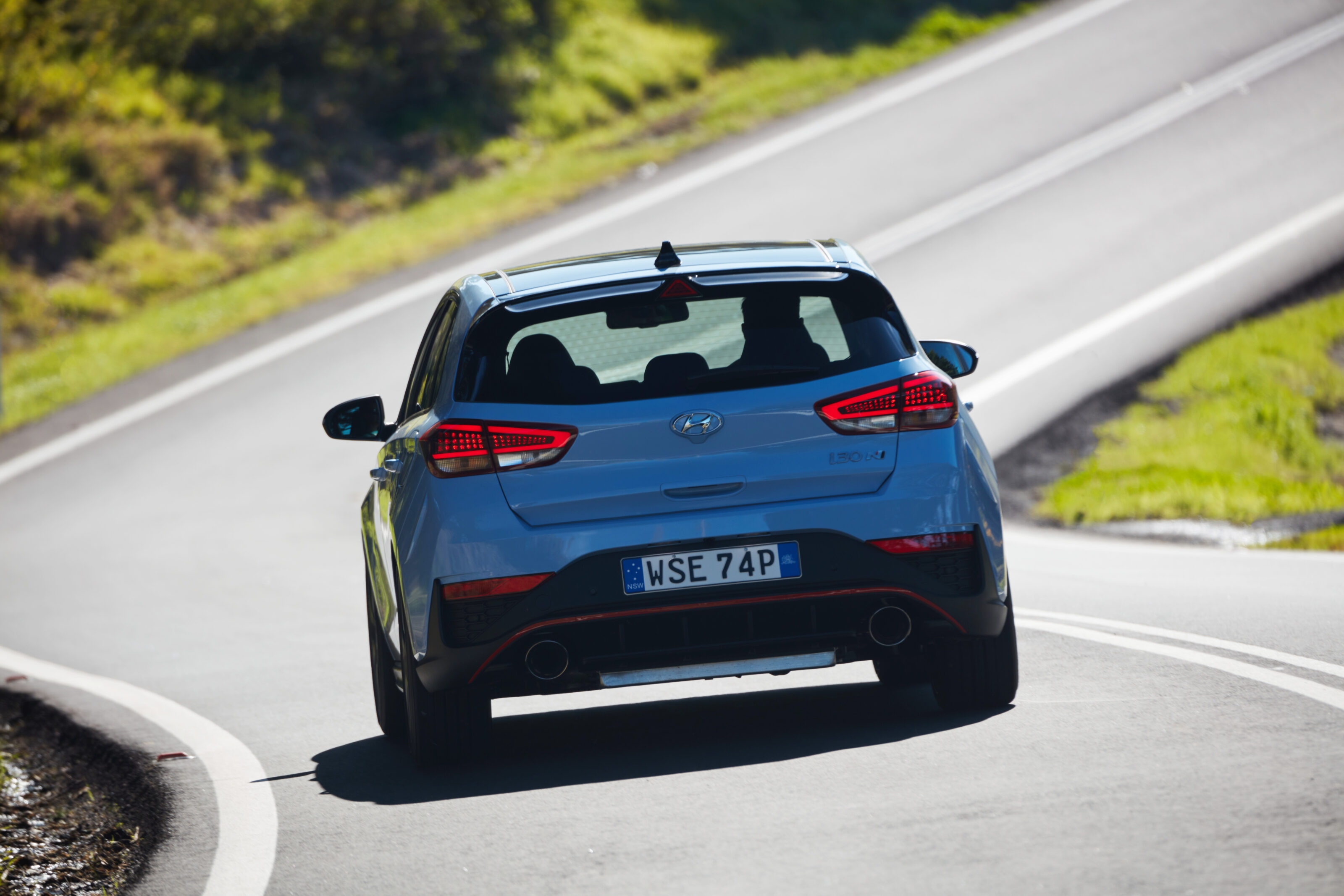
The riotous 2.0-litre T-GDi four-cylinder feels as explosive on corner exit as before. Just 4kW more has been squeezed from the little mill, but torque is up a decent chunk, now topping out at 392Nm. A modest peak power increase belies a drastically improved engine map, with the new unit producing more power and torque comprehensively throughout the rev-range from 2000rpm.
The new ‘flat power’ philosophy sees the i30 N’s native torque output exceed the old overboost function, arriving at 2100rpm and sticking around until 4700rpm. Power rushes hard and fast up to 5000rpm, maintaining that peak 206kW through to 6000rpm before cutout is hit at 6400rpm. The new DCT also drops the i30 N’s 0-100km/h time to a claimed 5.4-seconds.
Achieving the new power curves required far more than a simple flash tune, with N Division increasing the engine block strength via different machining techniques, adding a larger 6.8-litre intercooler (up 0.3-litres), and a redesigned turbo with new flow paths and larger compressor, turbine and scroll area; with development aided by Hyundai’s own i30 N WTAC Clubsprint competitor of 2019.
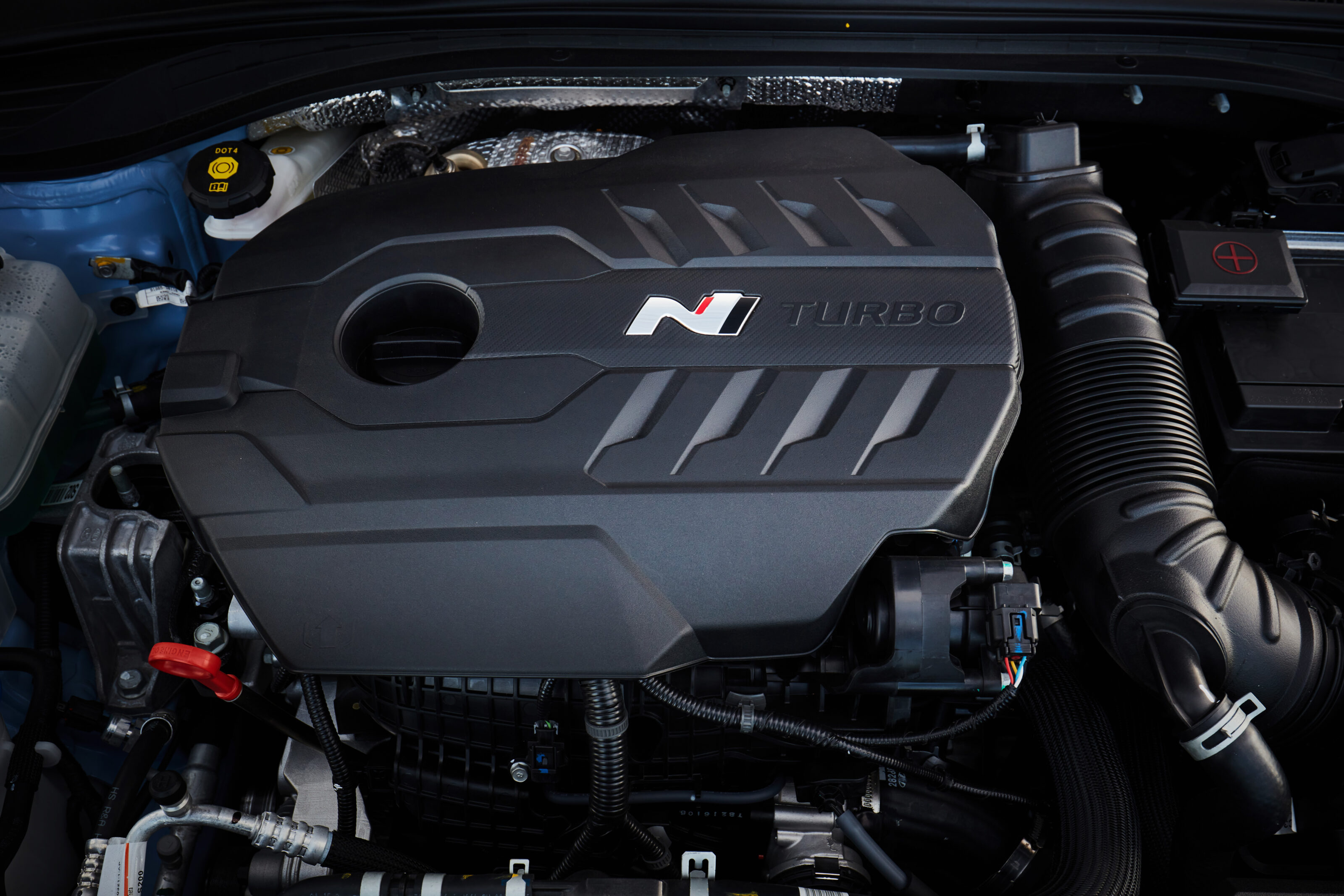
The end result is a great hot hatch that’s still devastatingly capable and undeniably fun on a twisty road, but also one that’s grown in scope and maturity when dealing with the bump and grind of life.
The cabin may be somewhat of a sore point to some, sharing many of its main hardpoints and cues with the pedestrian i30. The Premium Pack does much to elevate the ambiance, but plastics are still a big theme across the dash. Functionally, however, it’s great.
The update brings along a big serving of added tech, with all equipment interfaces remaining intuitive and easy to use. The touch-sensitive shortcut buttons below the 10.25-inch touchscreen seem a little too easy to press when attempting to use the screen on the move, however.
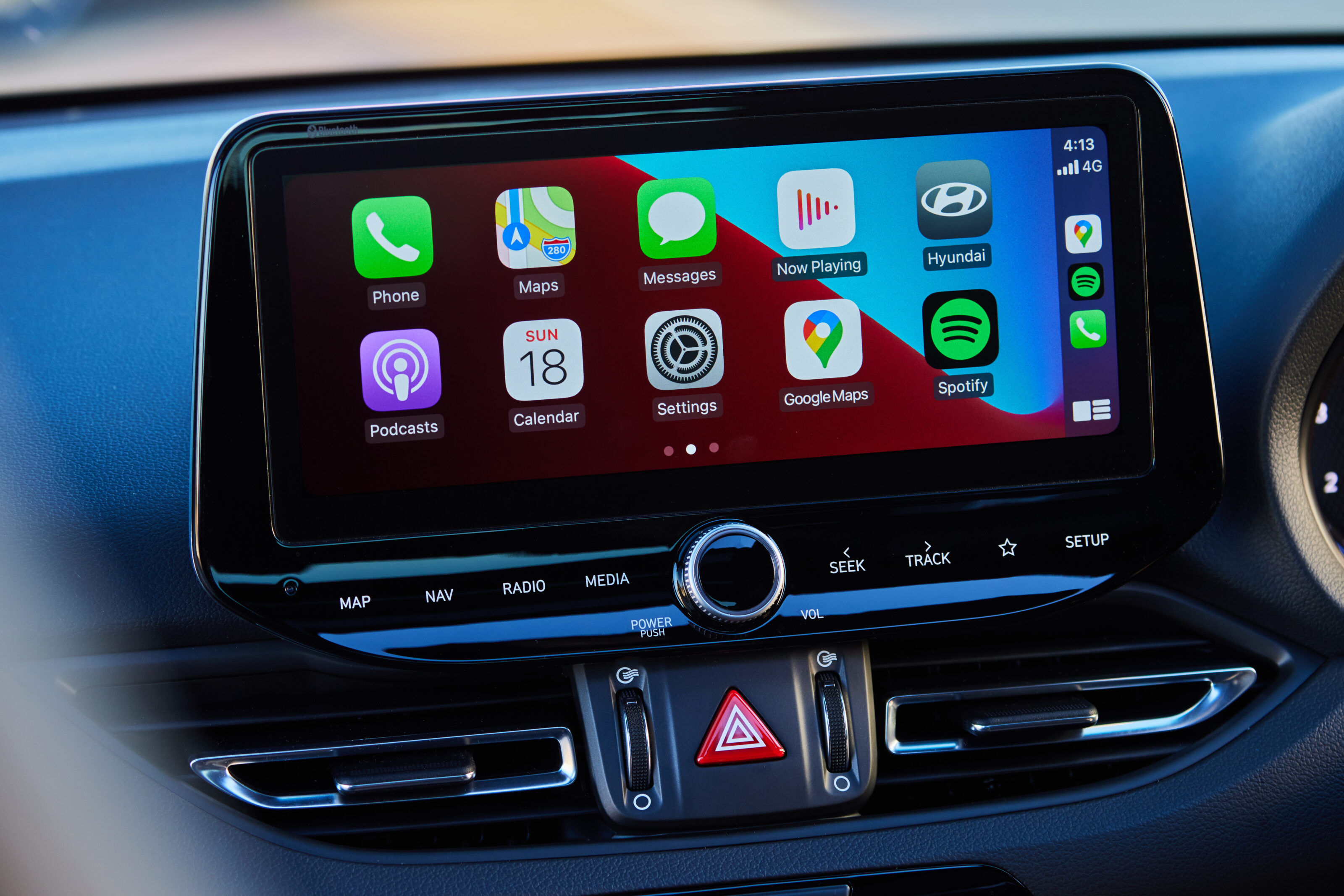
With this new update Hyundai has avoided change for the sake of it, bringing genuine advancements and improvements – along with an associated price increase. As a result, the original value proposition may have been diluted, more so in this particular fully-loaded spec, but it’s a resoundingly capable car and, thanks to the added eight-speed, those merits have now been opened up to a whole new pool of drivers.
If you were previously limited by the sole-available H-pattern, N Division now has a car for you (there’s also a Kona).
The self-shifting i30 N has been a long time coming, but good things come to those who wait. Hyundai have simply given more of us, more of a very good thing.
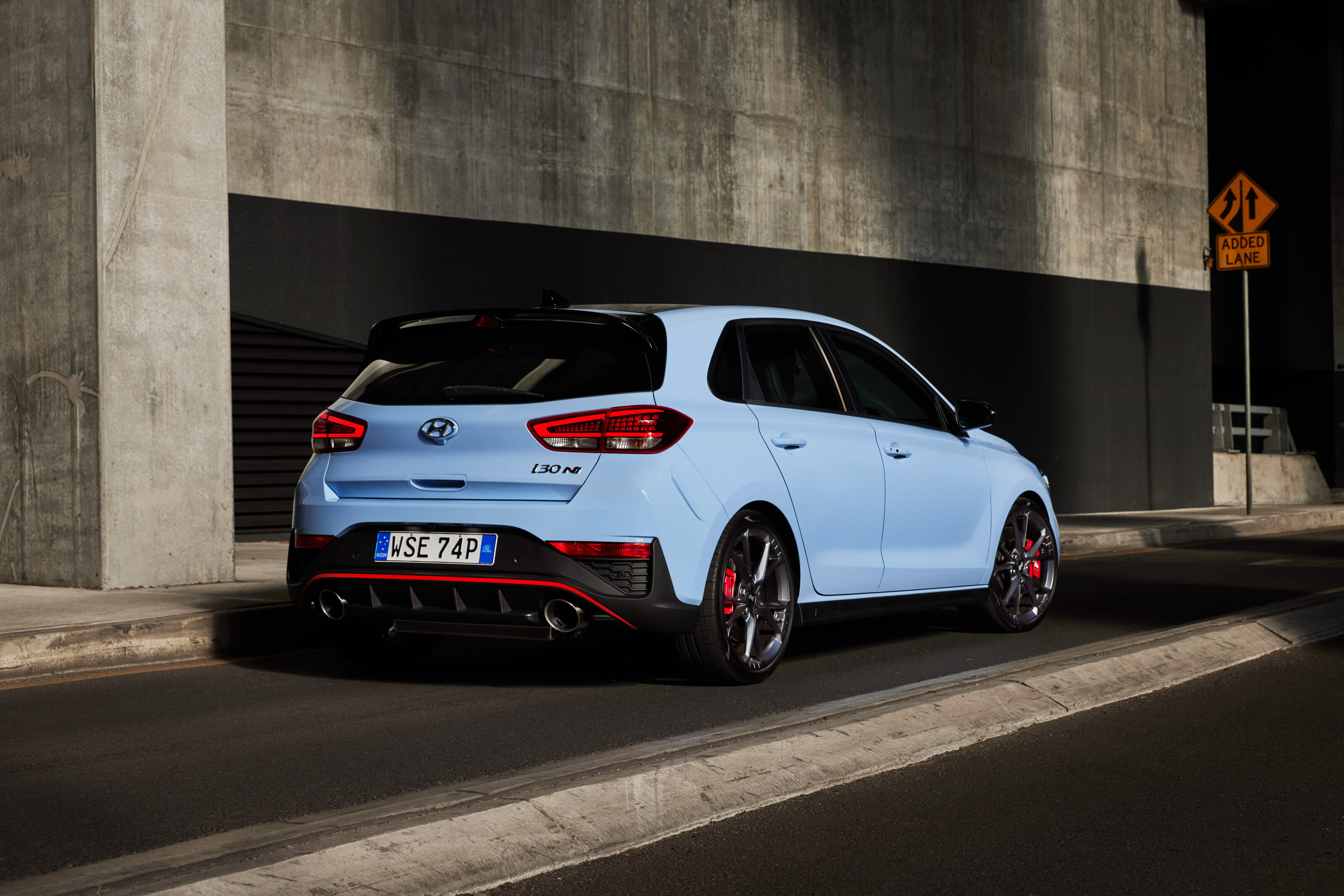
Hyundai i30 N DCT Premium w/sunroof specs
| Body: | 5-door, 5-seat hatch |
|---|---|
| Drive: | front-wheel |
| Engine: | 1998cc inline-4, DOHC, 16v, turbo |
| Bore/Stroke: | 86.0 x 86.0mm |
| Compression: | 9.5:1 |
| Power: | 206kW @ 6000rpm |
| Torque: | 392Nm @ 2100-4700rpm |
| Weight: | 1541kg |
| Transmission: | 8-speed dual-clutch |
| kW-per-tonne: | 133kW/tonne |
| Suspension: | struts, adaptive dampers, anti-roll bar (f); multi-link, adaptive dampers, anti-roll bar (r) |
| L/W/H: | 4455/1795/1419mm |
| Wheelbase: | 2650mm |
| Tracks: | 1573/1564mm (f/r) |
| Steering: | electrically assisted rack-and-pinion |
| Brakes: | 360mm ventilated discs, 4-piston calipers (f); 314mm solid discs, single-piston calipers (r) |
| Wheels: | 19.0 x 8.0-inch (f/r) |
| Tyres: | 235/35 R19 (f/r); Pirelli P Zero HN |
| Price: | $52,000 + ORC |
Things we like
- Duality of character
- Versatile and effective gearbox
- Hugely capable and hugely fun
Not so much
- Increased entry price
- Interior materials
- Large turning circle
We recommend
-
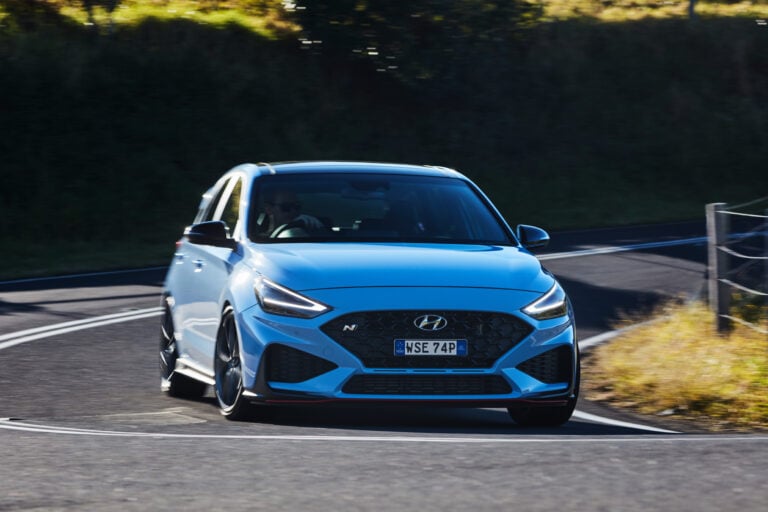 News
News2022 Hyundai i30 N pricing announced, DCT auto arrives
Hyundai's updated hot hatch is finally here, and it's got the dual-clutch transmission at last!
-
 Advice
AdviceWhich car should I buy? Ford Focus ST v Hyundai i30 N
Alan needs a practical hot hatch and wrote in struggling to choose between the Ford Focus ST and Hyundai i30 N. Here's our answer!
-
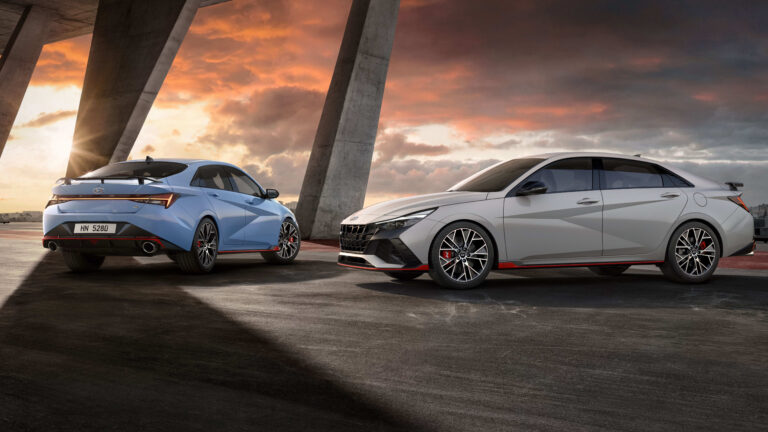 News
NewsHyundai i30 Sedan N revealed, Australian features detailed
i30 Sedan finally scores N Performance credentials


